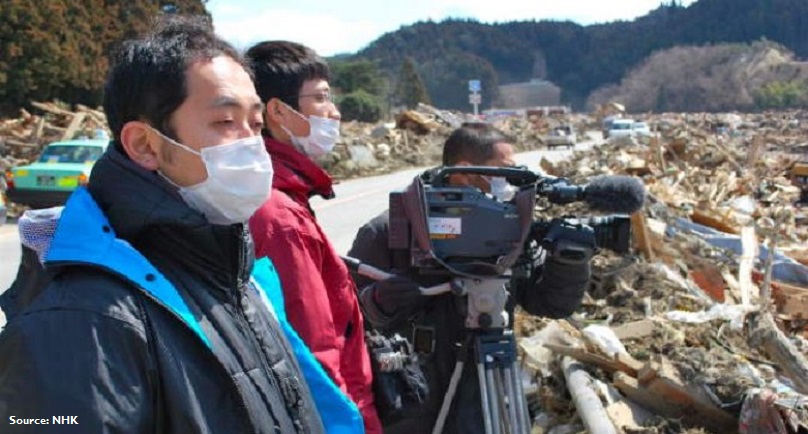by Scott Waide – EM TV,
Increasingly, broadcasters in the Asia-Pacific region are becoming more aware of the vital role public broadcasters play before, during and after major disasters.
The public broadcaster’s role has shifted from being merely an observer to being an integral part of disaster prevention and management.
Gathering in Sendai City early this month, heads of news organizations, brought together by the Asia-Pacific Broadcasting Union (ABU) and host NHK – Japan’s public broadcaster – were given an insight into experiences of how a broadcaster can respond to natural and manmade disasters. Again, the role of the public broadcaster had been challenged.
Japan’s long history of dealing with disasters has given its broadcasters wide-ranging experience.
In March 2011, the coast of Sendai was the epicenter of the biggest earthquakes this century. The earthquake triggered a violent tsunami that killed thousands of people.
Within minutes of the tsunami, NHK sent the first pictures of the raging waves of debris all over the globe. Those pictures drew global recognition yet again for NHK as a leader in news and current affairs in the Asia-Pacific.
But, while disaster reporting is vital and irreplaceable, there is now a regional push for reporting on disaster forecasting. NHK, has since established a team of young journalists who are being trained for a role previously overlooked by many news organizations. The team takes into account weather forecasts, seismic reports and other relevant statistics to form a picture of what kind of disasters the public can expect.
In Korea, broadcasters are able to access a wide range of video footage from CCTV cameras that give real time updates when a disaster happens.
It is many years away from the capabilities of any public broadcasters in Papua New Guinea. But in many instances, the flow of information hinges on relationships between the broadcaster agencies of government responsible for disaster management and prevention.
In Papua New Guinea, the lessons learned from the technological powerhouses of Japan and Korea can be translated into its most basic form. Sourcing reliable data can be a problem, but building relationships between key stakeholders like the National Disaster and Emergency Services, the National Weather Service, the United Nations, the Tsunami Warning Center and of course other broadcasters will go a long way in ensuring that early warnings are provided.
As a free-to-air public broadcaster in Papua New Guinea, EMTV has since extended the offer of partnerships to other government and non-government organizations to encourage interaction in disaster warning, management and prevention. It is one of the first conscious approach to changing the way journalists view disasters and report on them.
The path ahead to build public confidence and trust remains for the broadcaster. It is a path traveled by others in the region.


